The Gulf has consistently been viewed as one of the most conservative places in the world. In Saudi Arabia – the birthplace of Islam, mandated strict rules for dress code and behavior in the country. However the hijab or covering of a female’s hair is not mandated in any of the Gulf countries. Still, when we see images coming from the Gulf States, many women are seen in modest black abayas and niqabs and men often adorned in white thawbs and red and white guhtra (similar to a kuffiyeh) or a bisht that covers their scalps.
Trying to decipher what to wear in the gulf as a tourist can be daunting and intimidating. This guide provides an explanation of what to bring, what to avoid and what locals wear in each of the Gulf States!
Table of Contents
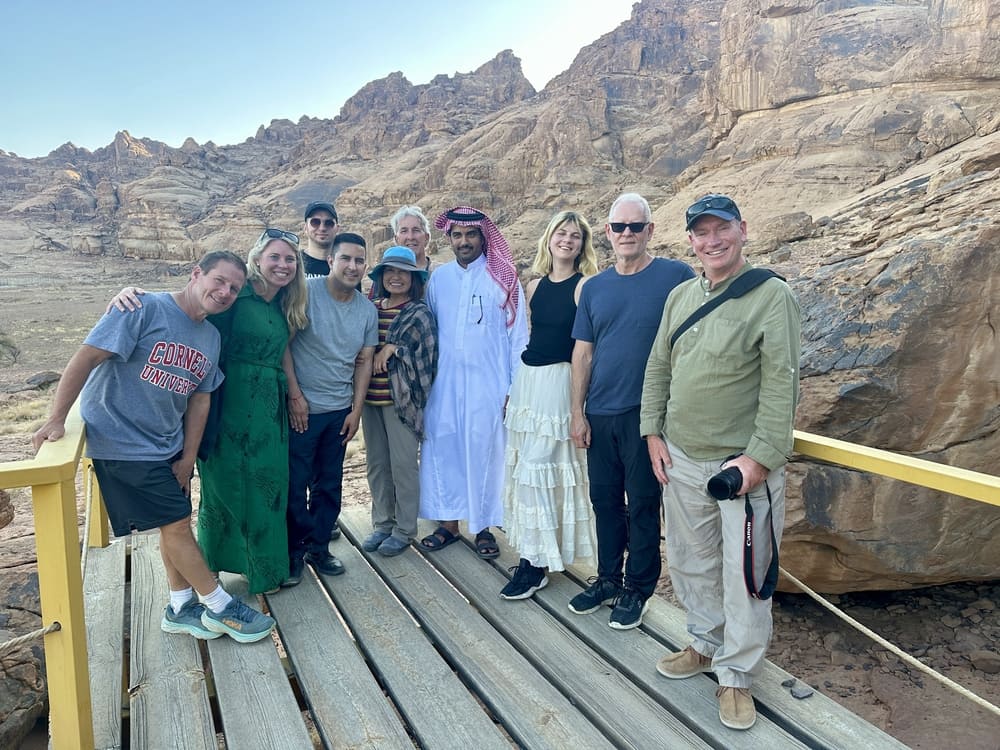
Bahrain
Bahrain is the smallest Gulf country and one that many people skip over. Bahrain has been an independent country since 1971 and while it is a muslim predominant country, it is perhaps less strict than others. Alcoholic drinks are permitted in Bahrain and there is no official dress code for locals or tourists. Bahrain is 55% Shia Muslim and 45% Sunni Muslim.
What The Locals Wear:
Local women often will be seen in long black abayas and scarfs around their hair. Some women are fully covered, others wear their scarf loosely. While it is a majority muslim country, there are Christians, Jews, Hindus and Buddhists living in Bahrain, usually as immigrant workers, which increase the country’s poly-religious makeup. This means you can see women in western clothing, in very modest islamic dressing and everything in between.
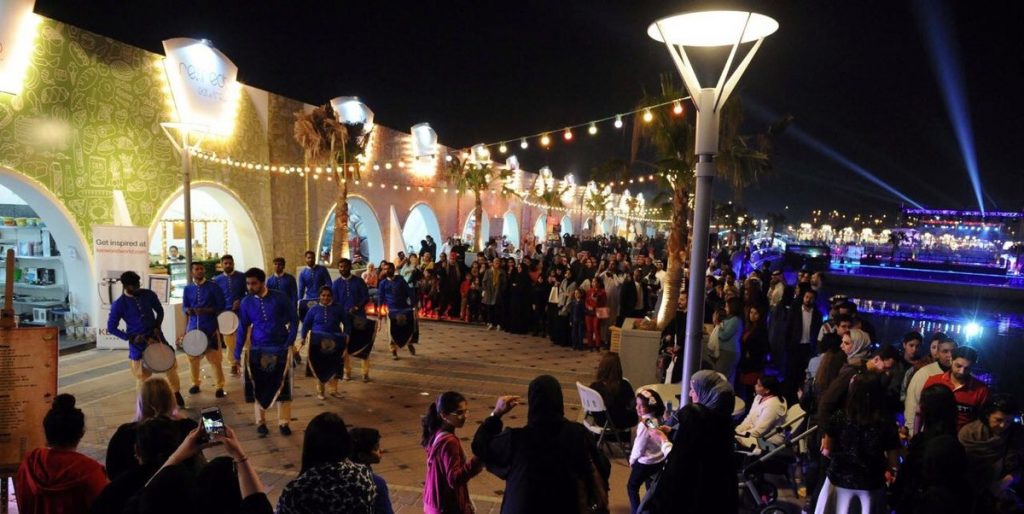
Kuwait
Kuwait is not on everyone’s bucket list – but it offers many incredible places – from wide deserts, to a futuristic capital and the gem for YPT travelers – Failkala Island which is an island museum of the remnants of the Gulf War and the Iraqi Invasion. Kuwait has some of the more strict Islamic laws out of the Gulf States – some everyday items are banned from being imported such as games of chance, playing cards and products of Israeli origin. However, this doesn’t completely translate to the dress code in the country.
What The Locals Wear:
Locals often wear western styled clothing or Gulf styles abayas and thawbs. You are unlikely to see people in the cities adorned in traditional Bedouin clothing as many take a more modern approach when it comes to clothing. While many wear western styled clothing, it is important to not wear anything too short, too sheer or too cropped!
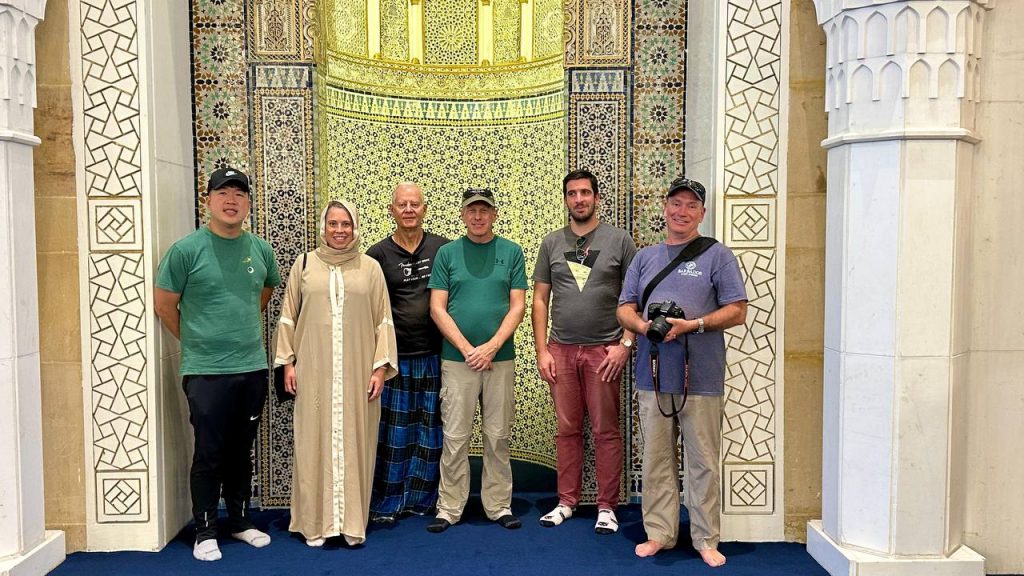
Qatar
Qatar is one of the smaller countries in the Gulf, which put itself truly on the map by hosting the Fifa World Cup in 2022. The country comprises countryside and a singular city, Doha which is a modern metropolis that blends tradition with contemporary chic. While Doha is a hub for financial activities and development, outside the city you are likely to see the strong influence of traditional Qatari.
What The Locals Wear:
Inside the capital city of Doha, most people will be adorned in western clothing or traditional gulf attire, such as flowy abayas and black outfits, including scarfs and shawls with men often in thawbs. Alike many other Gulf countries, immodest clothing is not allowed or may be frowned upon. Women and men alike dress modestly in most areas of public life.
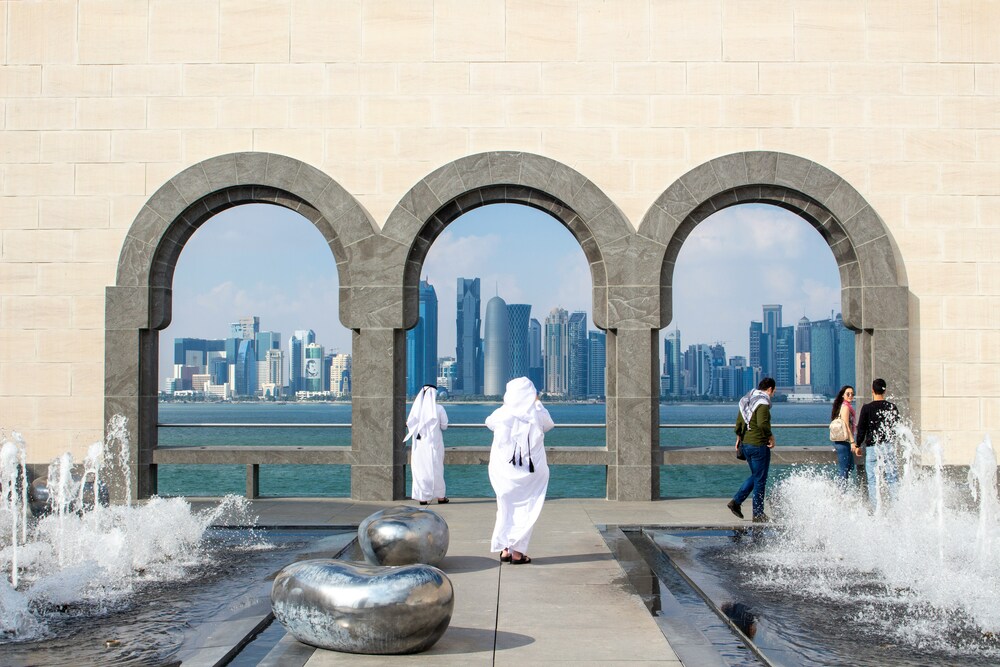
Saudi Arabia
Saudi Arabia has changed significantly in the last 5 years. The country has continued attempts to modernise in many fields including financial, environmental and in the social sphere. Once known as one of the strictest countries in terms of dress and behaviour, Saudi is no longer so unilateral – including what is normal in terms of dress sense. In 2018 the crown prince Mohammed bin Salman Al Saud attempted to relax the dress code, saying that women did not have to wear an abaya in public. However, despite this, around 63% of women in Saudi choose to wear the niqab as it is a garment culturally normal.
What The Locals Wear:
Saudi Arabia lifted the niqab is an important part of Saudi culture and in most Saudi cities – particularly Mecca and Medina. The vast majority of women cover their hair as well as their faces, although this is not a requirement. Some women in Saudi will wear no scarf and wear modest western clothing, however this is largely in the bigger cities. In rural areas, women tend to dress more conservatively. Men dress traditionally in Saudi, with most men adorning thawbs and red and white gutra or bisht on their head.
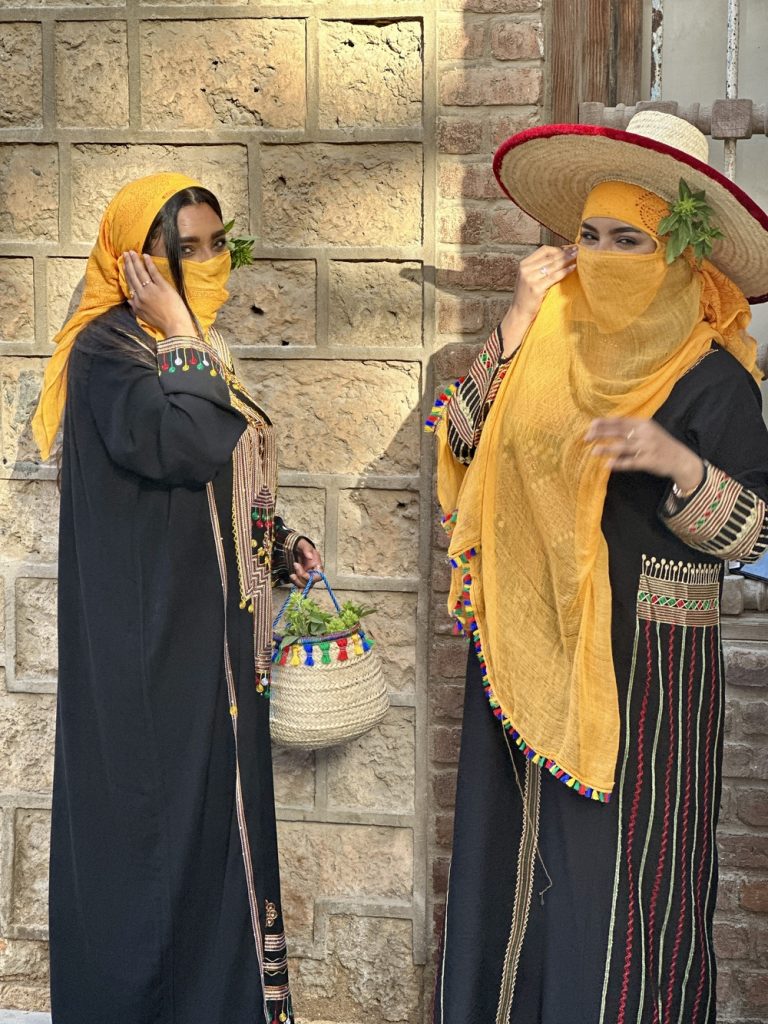
United Arab Emirites (UAE)
The UAE is one of the more well known gulf states. It is home to the megacity Dubai which is globally famous and known – with many people believing Dubai is the capital city or sometimes, even a country! However there is much more to the UAE than just the glistening modern hub of Dubai – there are 7 emirates in total, all completely varying in terms of their economic capabilities, industries, population and level of conservatism.
What The Locals Wear:
When talking about locals in the UAE, in larger cities such as Dubai and Abu Dhabi there is a huge spectrum which includes many tourists and immigrants wearing some of the less conservative clothing in the whole Gulf! While walking through Dubai mall it seems as though anything goes, it is not a good look to be wearing immodest clothing.
Traditional UAE wear includes long, dark and flowy dresses, thawbs and a bisht or gutra for men and women often adorn a unique eyewear called an Emirati Burqa which is a cloth and wooden piece that covers the face like a mask around the forehead, down the bridge of the nose and across the bottom of the cheek, showcasing the eyes. Not many Emirati women wear this these days apart from in weddings and traditional events or occasions.
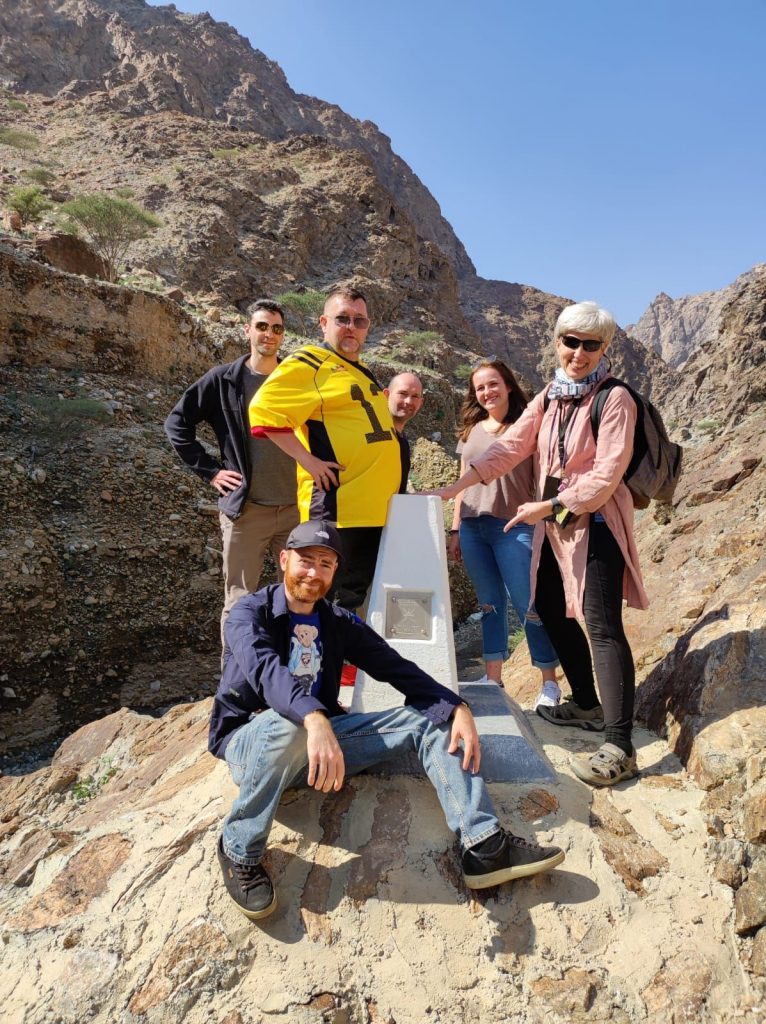
Yemen
Yemen differs from other countries in this list – it is the only country still in a civil war. While most of the country is not accessible and is extremely unstable due to the war, there are pockets of mainland Yemen that are visitable. Additionally, the island of Socotra is also visitable and offers a very different experience
What The Locals Wear:
In Mainland Women and Socotra, most local women dress very conservatively – often wearing black abayas and headscarf or a plain coloured niqab. Men can be seen in traditional clothing, including a white thawb and often they will wear a belt homing a dagger called a Jambiya!
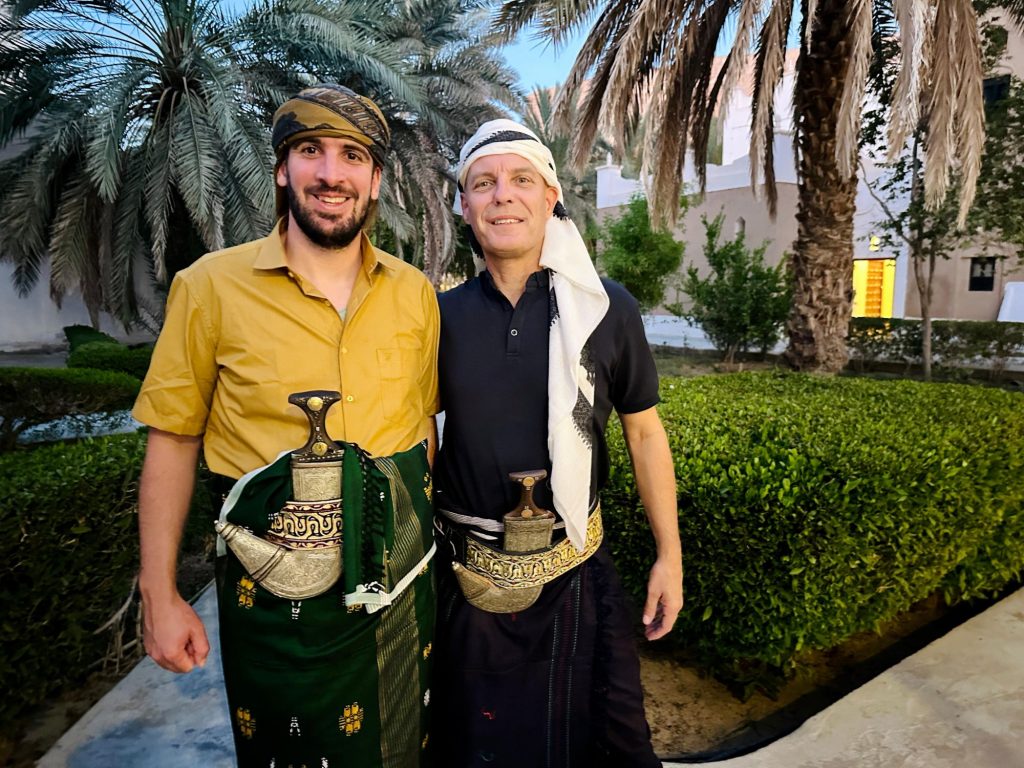
What To Bring To The Gulf Countries
While in most of these countries (excluding Yemen with a very low immigrant community), there is a big difference between the attire most locals and immigrants wear, making a spectrum of styles and clothing. However, you should cover your chest, shoulders and knees. Super tight fitting clothing, shorts and bikinis should be avoided.
For countries such as the UAE, Bahrain, Kuwait and Qatar, there is a big difference between the attire most locals and immigrants wear, making a spectrum of styles and clothing. In Saudi Arabia, Oman and Yemen, you will see less extreme diversity in clothing options and more traditional, modest styles worn. Still, between all these countries there are some basic do’s and don’t when packing your bag:
What to bring:
- A pashmina, cotton or silk scarf for entering mosques and covering when necessary
- Long and loose skirts, pants, dresses, blouses/shirts and an abaya if you have one.
- Comfortable walking shoes
- A light jacket for night time in winter (it can get cold in the deserts!)
- Modest swimwear such as a long rashvest, long swim shorts, a burkini or baggy clothes for swimming in public places.
What To Leave at home:
- Singlet tops – especially tight or low cut singlets
- Crop tops
- Sheer clothing and tight clothes such as leggings
- Bikinis and short male swim trunks
Do I Have To Wear A Hijab?
There are only two countries in the world that currently mandate women to cover their hair – Iran and Afghanistan. While there may be times it is required (such as entering a mosque) it is not mandated in everyday wear.
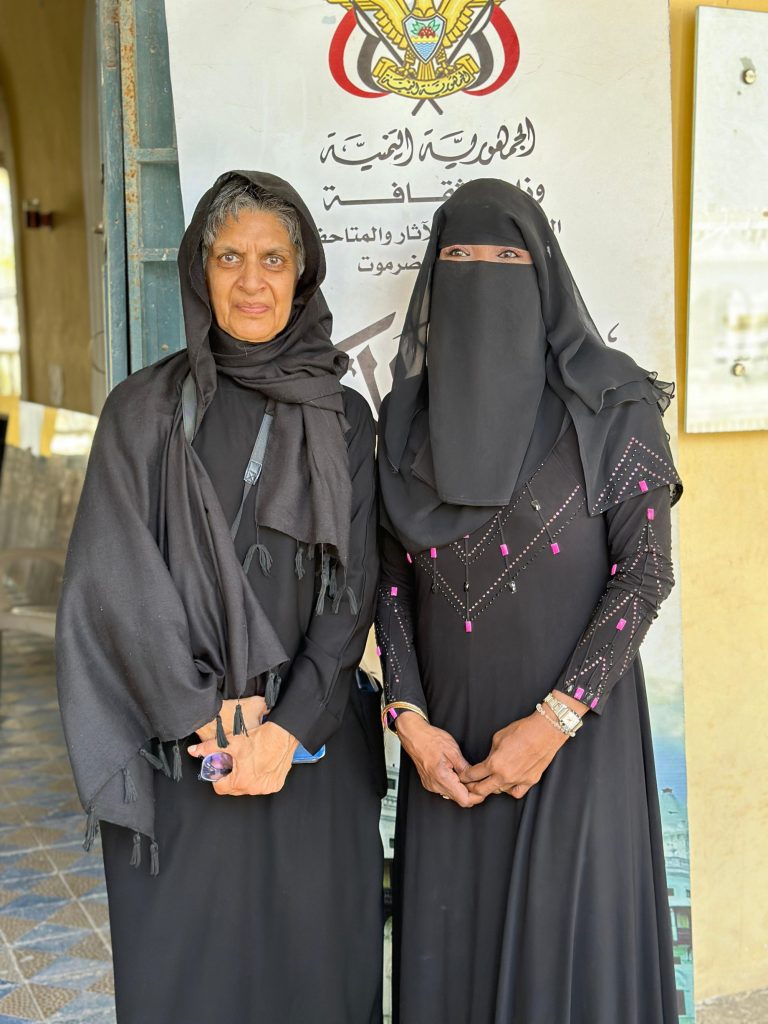
Tours To The Gulf:
Join us in the Gulf on one of our Tours to Yemen, Saudi, Kuwait or the Whole Gulf!





